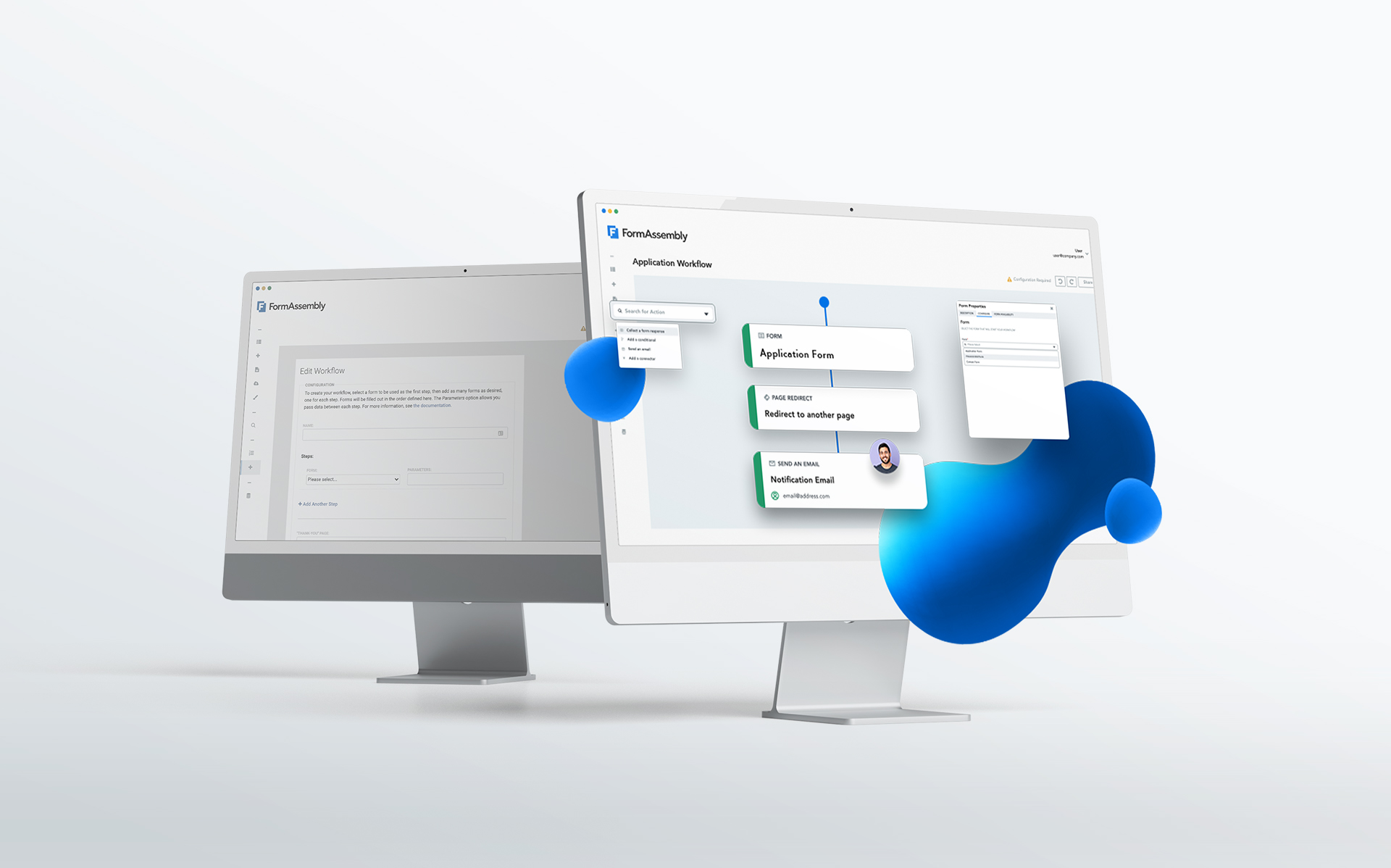FormAssembly Workflow changed everything at FormAssembly. The release of this new solution shifted our focus from a form-first view to a more holistic focus on data collection and data stewardship.
But if you’ve been with FormAssembly for any length of time, you know that the journey to our new Workflow solution began long before the November 2021 release. It’s long been possible to create workflows of varying complexity with FormAssembly, but not until the recent release has it been so easy and so powerful.
In this article, we’ll explore the backstory of our Workflow solution and how we moved from a simple, linear workflow feature and creative customer workarounds to what we now call FormAssembly Workflow.
A History of Workflow Functionality at FormAssembly
Before FormAssembly Workflow, FormAssembly did offer a workflow tool, but it paled in comparison to the functionality of the new solution.
Essentially, legacy Workflow was a useful tool for linear processes that required a number of forms to be filled out one after the other by the same person. It was the digital equivalent of handing a person a stack of paper forms that they needed to complete.
However, legacy workflows were not dynamic and did not offer automated decision-making or much in the way of flexibility.
Learning From the Ingenuity of Our Customers
Again and again, we’ve watched our customers achieve astonishingly creative results with our form builder, even coming up with uses and functionality we hadn’t imagined. FormAssembly’s native legacy workflow functionality was very good for simple situations, but in those cases that it couldn’t support more customization, our users uncovered creative ways to essentially build the custom workflows they needed.
One of the common workarounds that you may have used yourself was to use formulas in redirect URLs to direct form fillers to different locations. Using formulas, FormAssembly customers were able to add complexity and conditional logic to their forms. For example, with a formula, a user could send form fillers to a different form based on their answers in a previous form, conditionally prefill information in forms, and more.
Our resourceful users built the functionality they needed from the building blocks we provided in our platform, and that ingenuity was part of the inspiration for building our new Workflow platform.
FormAssembly Workflow Today: A Powerful Interface Supports Growth and Innovation
At FormAssembly, we want data collection to evolve in order to meet the needs of our customers and their organizations. As we witnessed customers developing a complex workflow workaround to create the processes they need, it became clear that we needed to improve our product to help our customers do this in an easier, more streamlined way.
Workflow, which offers all the complexity and customization of redirect formulas (and more), allows users to build processes as easily as they could build forms in FormAssembly before. Now, workflows are achievable without writing formulas (though advanced users can still leverage them if desired) and doing unnecessary manual work.
Our hope is that, whether you’re a veteran customer or a new user, you’ll be able to leverage the new solution to create applications, registration processes, pre-qualification workflows and so much more at your organization.
Learn more about what Workflow can do for your organization.



